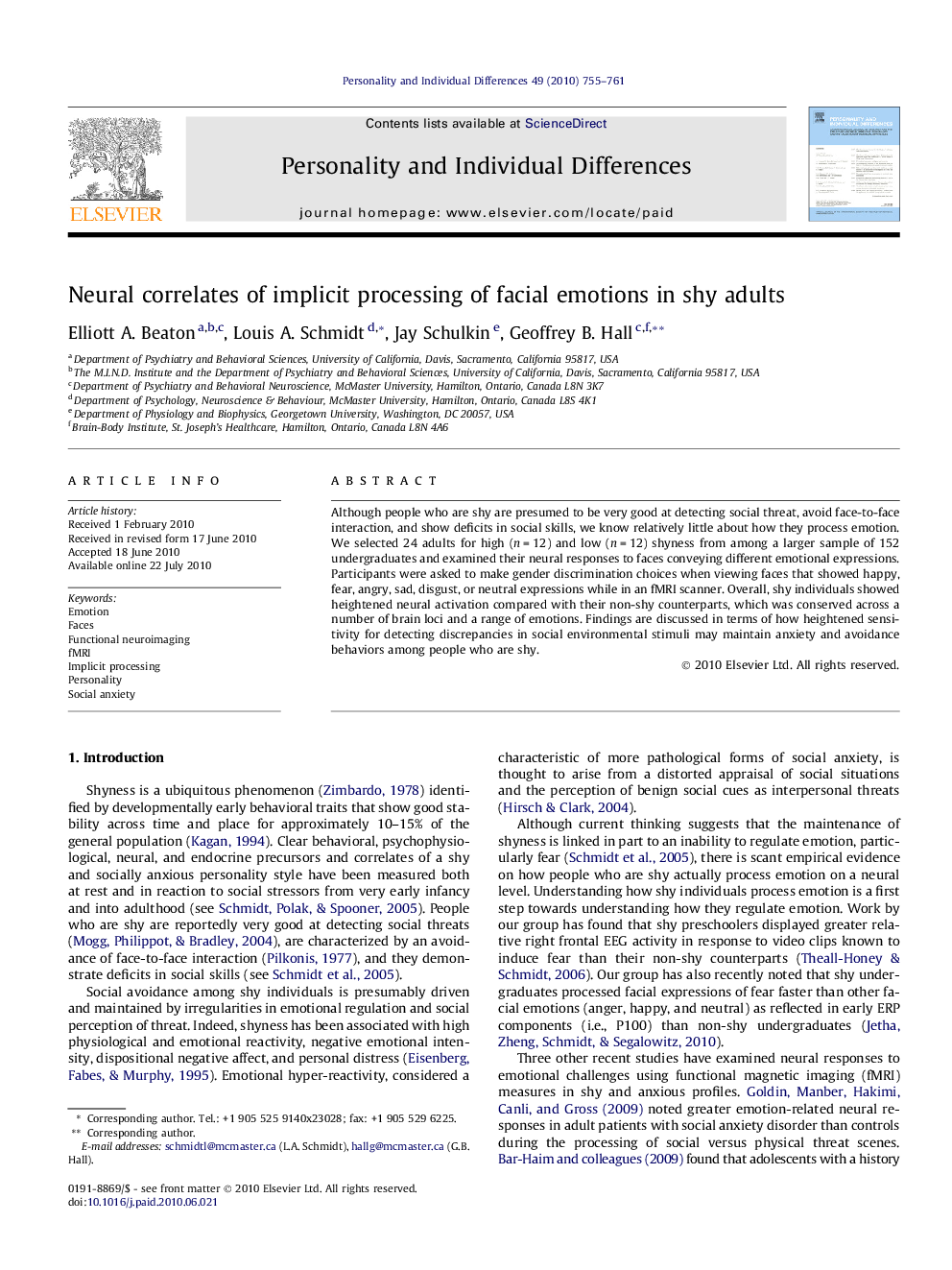| Article ID | Journal | Published Year | Pages | File Type |
|---|---|---|---|---|
| 891899 | Personality and Individual Differences | 2010 | 7 Pages |
Although people who are shy are presumed to be very good at detecting social threat, avoid face-to-face interaction, and show deficits in social skills, we know relatively little about how they process emotion. We selected 24 adults for high (n = 12) and low (n = 12) shyness from among a larger sample of 152 undergraduates and examined their neural responses to faces conveying different emotional expressions. Participants were asked to make gender discrimination choices when viewing faces that showed happy, fear, angry, sad, disgust, or neutral expressions while in an fMRI scanner. Overall, shy individuals showed heightened neural activation compared with their non-shy counterparts, which was conserved across a number of brain loci and a range of emotions. Findings are discussed in terms of how heightened sensitivity for detecting discrepancies in social environmental stimuli may maintain anxiety and avoidance behaviors among people who are shy.
